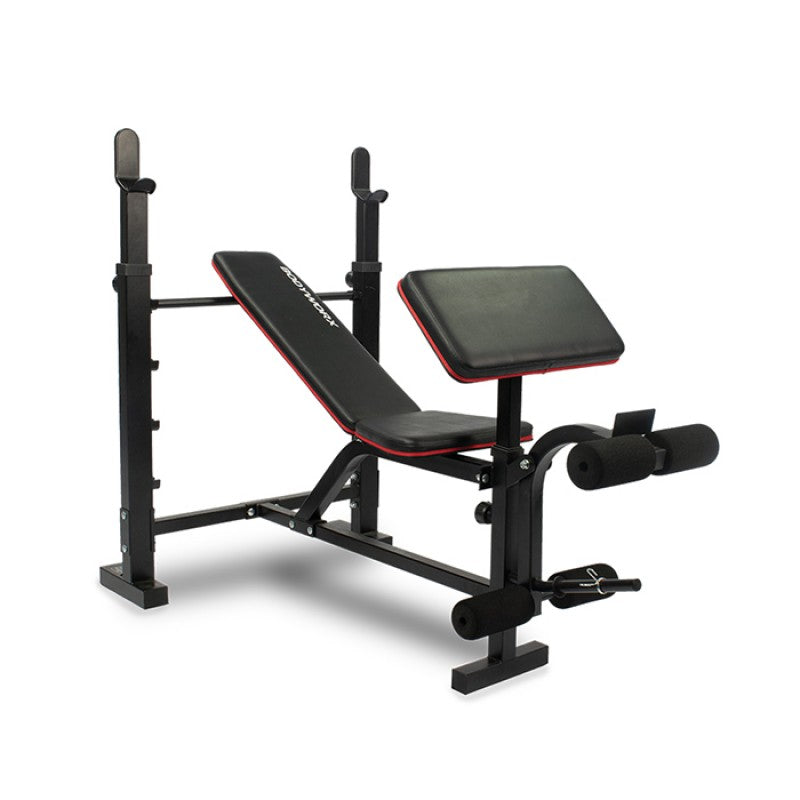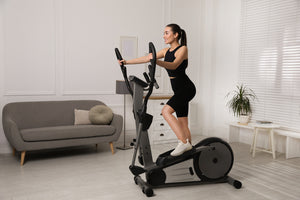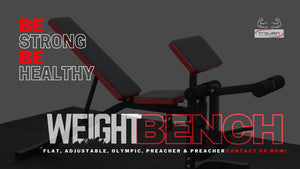Dream of being young, energetic and enthusiast!!!!!
You got enough energy to perform any task doesn’t matter how hard it is.
Woo!! That lean body and fitness…..Got stamina though!!!!!
Well for now in this digital world it’s a dream. Reality check please…Lazy, powerless and obese with no energy and stamina to do any task which actually seems hell tough. Wonder what is plyometric training exercises? What is this jump training thing? What is the secret behind famous athletes and players’ stamina and energy? How people can do intense tasks easily? What if your body is aging? What is the stigma of power training?
Are you sick of doing the same boring exercises over and over again that make you feel like a sluggish sloth? Prepare to unleash your inner Flash, Batman, Hulk, Spider-Man, or Aquaman as you explore the exhilarating world of plyometric exercise. Jumping like a kangaroo, gazelle, and over-caffeinated bunny, respectively. Plyometric exercise is more than just a workout; it’s a bone-building, gravity-defying adventure that will make you jump for joy. So, fasten your sneakers, and get ready to defy physics as Trojan Fitness takes you on a thrilling tour of the world of plyometric exercises.
Take a Booster of 5 Plyometric Exercises to Charge Your Battery
Listen up!!! If you haven’t been focusing on plyometric exercises for power, it’s possible that your bones are losing density. In this article, Trojan Fitness bring five effective plyometric exercises that require minimal equipment and can be performed anywhere. These exercises not only boost your power but also strengthen your bones and reduce the risk of injury, ensuring that your body remains active and agile.
It’s a Jump of Joy!
What Is Plyometric Training?
Welcome to the explosive world of Trojan Fitness, where we’re about to unveil the superhero secret to unlock your fitness potential – Plyometric Training. Imagine if you could channel the power of lightning bolts to supercharge your workouts, enhancing your strength, speed, and agility in one electrifying routine.
Thrilling fusion of fitness and fun!
Plyometrics, or “plyo” for short or “Jump Training”, is all about harnessing the energy of rapid, explosive movements to boost your daily life performance. With each jump, bound, and hop, your muscles are ignited like dynamite, firing up your power and coordination. Whether you’re a fitness fanatic or a newbie looking to spice up your routine, plyometric training will leave you feeling like a true fitness warrior.
Build Muscles and Flaunt like Bruce Lee!
Plyometrics exercises targets your core, arms, legs, abdomen, back and overall your body frame by speeding up the muscles’ action. Plyos is a complete booster of flexibility, strength, and aerobics.
What are the Benefits of Plyometric Training?
Unlock the Power of Benefits with Trojan Fitness Plyometrics’ Guide:
- Skyrocketed strength as plyometrics unleash your inner dynamo, building explosive strength that can’t be contained.
- Witness your agility transform as plyometrics fine-tune your body’s responsiveness to every move.
- Jumpstart endurance, propel yourself to new heights of endurance, leaving old boundaries behind in the dust.
- Fountain of flexibility into your fibers.
- Cardiovascular bliss that elevates your heart rate and dance to the rhythm of fitness.
- Unleash a harmonious symphony of muscles.
- Sculpting your physique with precision.
- Feel the sizzle as plyometrics set your metabolism on fire, melting away calories like never before.
- Injury Immunity, build an armor of resilience as plyometrics fortify your body.
- It’s a Gravity-Defying Fun.
- Secret weapon to achieving unmatched muscular coordination.
- Plyometrics contour, sculpt, tone, and redefine your body.
- Rewiring your brain for peak performance with plyos.
- Elevate your game to legendary levels.
Embrace the boundless excitement of Trojan Fitness plyometrics guide, where each step is taking you towards your true potential.
5 Best Plyometric Training Exercises:
Explore below best plyometric exercises for Improved Athletic Performance and Injury Prevention
1. Single Leg Hop

An advancement from the double leg hop, the single leg hop adds challenge and complexity.
How to Perform?
Choose one leg, load through the hip of that leg, and hop forward. Maintain eye and chest elevation for balance and to avoid waist collapsing. Upon landing, ensure an athletic stance with both feet.
Considerations:
Focus on hip loading and forward propulsion from the ground leg. Avoid swinging the off-leg; instead, concentrate on cycling the take-off leg to generate greater momentum. Progressing to multiple single leg hops will compound power.
2. Lateral Hop

Lateral hop introduces lateral movement for comprehensive training.
How to Perform?
Opt for a surface with a visible line e.g., gymnasium or track. Begin with one foot, lifted off the ground, then hop laterally to the other foot while staying on the line. Start with moderate power and progress while maintaining the lateral hop technique.
Considerations:
Maintain strict lateral movement to stay on the line. Loading through your hips and propelling off the ground leg, rather than reaching with the off-leg, enhances directional control and lateral stability.
3. Double Leg Hops

The double leg hop, also called as the standing broad jump. It helps an overall body coordination to build muscles and strength.
How to Perform?
Start the motion by sitting back into your hips. Keep your chest up. Look in the direction you want to jump. Uphold proper spinal alignment. After loading your hips, transfer your weight to your toes and advance. Start with a smaller jump to get used to the motion before gradually building up the force. Considerations:
Do not land on your knees, and avoid bending or tilting your hips back. Maintaining core stability and chest-to-toe alignment. Assist avoid landing through the knees and hip folding, respectively. When landing, excessively forwards foot placement frequently results in leaning back; prevent this by keeping your chest aligned.
4. Vertical & Horizontal Jumps:

It is a sequence that enhances force management and direction control, crucial for various athletic activities.
How to Perform?
Break down the drill into manageable steps. Think of it as combining a squat jump, double leg hop, and another squat jump. Start tall, load your hips, and jump vertically. Land athletically, proceed with a forward double leg hop, land again through your hips, and conclude with a final vertical jump.
Considerations:
Initiate each jump from a hip-loaded position, ensuring proper force distribution. Control the distance traveled during vertical and horizontal jumps by focusing on minimal forward distance during vertical leaps and maximal horizontal distance during the double leg hop.
5. Squat Jump

The squat jump, a straightforward exercise that requires minimal space, can be performed almost anywhere.
How to Perform?
Begin by standing on your toes. Descend by flexing your hips, then explosively propel yourself upwards, landing in an athletic stance with bent knees and hips. It’s essential to jump straight up to minimize forward movement. To start, you can attempt a single squat jump before progressing.
Considerations:
During the downward phase, focus on sitting back into your hips instead of allowing your knees to slide forward. When landing, absorb the impact through your hips to prevent strain on your knees, ankles, and feet. Keep your gaze forward and maintain an upright chest position to maintain spinal alignment and avoid potential back injuries.
Plyometrics offer substantial benefits, yet they are often underutilized. By integrating these five exercises into your weekly routine, you can enhance daily performance while reducing the risk of injuries. Incorporate these moves several days a week to promote joint, ligament, and tendon health.
What are the Myths of Plyometric Training?
Shattering the Illusions!
Unmasking the Mythical World of Plyometric Training.
- Cast aside the notion that plyometrics are reserved for the chosen few. In reality, they’re an accessible treasure trove of power for anyone willing to embrace their explosive potential.
- Time to debunk the fear! Properly executed plyometrics are like a symphony for your joints, promoting strength, resilience, and flexibility rather than leaving them in disarray.
- Quality over quantity wins the day. Don’t be deceived by the idea that endless repetitions lead to success. In the realm of plyometrics, precision reigns supreme.
- Plyometrics aren’t just for the spry youth; they’re a timeless treasure chest of benefits for the young at heart.
- Fear not the bulky myth! Plyometrics sculpt lean, powerful physiques, not hulking masses. It’s all about finesse, not sheer size.
- Toss aside the trampoline tactics. Effective plyometrics require deliberate control, ensuring each move is a calculated explosion of power.
- No Rest, No Gain! Overtraining is no badge of honor in the plyometric world. Adequate recovery is your secret weapon to unleashing true potential.
- No Equipment, No Gain! Your body is the ultimate tool. While equipment can add spice, plyometric magic happens when you harness your body’s inherent dynamism.
- One-Size-Fits-All! Say goodbye to cookie-cutter routines. Effective plyometric training tailors explosive exercises to your unique needs and goals.
- Speed Trumps Technique, Speed follows, but only when you’ve mastered the art.
- Cardio over Compounds! The myth of choosing between cardio and strength vanishes in plyometric wonderland. These explosive moves are your golden ticket to a multifaceted fitness journey.
- Exclusively for Vertical Jumps, Plyometrics propel your body through multi-dimensional motions, preparing you for the diverse challenges life throws your way.
- Instant Results or Bust, Patience, My Friend!!! Just like fine wine. True plyometric mastery takes time to mature. But when it does, the results are nothing short of extraordinary.
- One-and-Done Wonder. Myth busted! Consistency, not a fleeting flash, unlocks the true potential of plyometric training.
- False alarms all around for injured! When guided by experts, plyometrics can be the guardian angels of injury recovery, building resilience brick by brick.
- No Brain, All Brawn! Mental acrobatics are a must. Plyometrics challenge your mind as much as you’re muscles, fostering focus, coordination, and a powerful mind-muscle connection.
- Pacing Doesn’t Matter, it does as depending on slow and steady wins the race.
- Reckless Risks Ahead! Properly executed plyometrics are less risk and more reward, promising controlled explosions of strength.
Tips for Beginners about Plyometric Training
Here are essential tips for beginners along with plyometric exercises for beginners to fuel your training fire:
- Prioritize basic strength and flexibility before diving into plyometrics. A strong foundation reduces injury risks.
- Warm up dynamically with light cardio and dynamic stretches to prime your muscles and joints.
- Train on a forgiving surface like a rubber mat or grass to cushion the impact on your joints.
- Technique trumps speed. Master proper form before aiming for high-intensity jumps.
- Discomfort is normal, but pain isn’t. Respect your body’s signals and back off if something doesn’t feel right.
- Begin with low-intensity exercises and gradually increase intensity as your body adapts.
- Adequate rest between sessions allows your body to recover and adapt to the demands of plyometrics.
- Wear supportive athletic shoes to provide stability and cushioning during your jumps.
- Coordinate your breathing with each jump to enhance control and power.
- Regularity is key. Consistent practice yields better results than sporadic sessions.
Choose Jump Exercises to Elevate Your Plyometric Game according to your body need and we strongly suggest to focus from basics:
- Burpee
- Jumping Jack
- Skipping
- Squat Jump
- Tuck Jump
- Split Jump
- Lateral Bound
- Skater Jump
- Box Jump
- Depth Jump
- Single-Leg Hop
- Double-Leg Hop
- Broad Jump
- Pike Jump
- Burpee Box Jump
- Star Jump
- Ice Skaters
- Scissor Jump
- Ankle Bounce
- Frog Jump
- Plank Jacks
- Diagonal Bound
- Single-Leg Box Jump
- Lunge Jump
- 180-Degree Jump Squat
- High Knee Tuck Jump
- Straddle Jump
- Plyo Push-Up
Tip: Master each jump’s technique before progressing to advanced variations. Stay mindful of your body’s signals and stay motivated on your plyometric journey.
Choose Gym Equipments for Plyos to harness the expertise:
Plyometric training primarily focuses on explosive movements and doesn’t necessarily require a lot of specialized equipment. plyometric exercises for speed particularly allows you to boost stamina and increase workout timings for better results but remember consistency matters. Here’s a list of gym equipment that can be used for plyometric training:
- Plyometric Boxes: These are platforms of varying heights used for exercises like box jumps, step-ups, and depth jumps. They help develop explosive power and jumping ability.
- Resistance Bands: These can be incorporated into plyometric exercises to add resistance and challenge different muscle groups.
- Medicine Balls: These weighted balls are great for exercises like medicine ball slams, throws, and jumps, adding resistance and intensity to your workout.
- Agility Ladders: Agility ladders are used for footwork drills, helping to improve coordination and speed.
- Cones or Markers: These are useful for marking jumping or bounding distances and for creating patterns for agility drills.
- Bosu Balls: A Bosu ball (half stability ball) adds an element of instability to your plyometric exercises, engaging core muscles and enhancing balance.
- TRX Suspension Trainer: It can be used to add a dynamic component to your plyometric movements and bodyweight exercises.
- Kettlebells: While not exclusively for plyometrics, kettlebells can be incorporated into exercises like kettlebell swings to enhance explosive power.
- Sandbags: Sandbags can be used for various plyometric movements, providing an unstable load that challenges your muscles differently.
- Weighted Vests: Wearing a weighted vest during plyometric exercises increases the load and intensity, adding resistance to your jumps and bounds.
- Jump Ropes: Incorporating jump rope exercises can enhance your cardio conditioning and footwork skills.
- Battle Ropes: While not traditional for plyometrics, battle ropes can be used for dynamic movements that engage multiple muscle groups.
- Trampolines: Mini trampolines can be used for low-impact plyometric exercises, reducing stress on joints while still improving explosive power.
Games Required Jump Trainings:
Plyometric training can be beneficial for improving stamina and performance in various sports and physical activities. plyometric speed exercises can enhance the fast performing actions to reach maximum game goals. Here are some of the games and sports that can greatly benefit from incorporating plyometric exercises:
- Basketball
- Cricket
- Badminton
- Volleyball
- Soccer/Football
- Track and Field (Sprints and Jumps)
- Tennis
- Rugby
- Martial Arts: Gymnastics
- CrossFit
- Boxing
- Ultimate Frisbee
- High-Intensity Interval Training (HIIT)
These are just a few examples of sports and games that can benefit from plyometric training to enhance stamina and performance. However, it’s essential to tailor the plyometric exercises to the specific needs and demands of each sport and individual athlete. Additionally, proper coaching and progression are crucial to prevent injuries and maximize the benefits of plyometric training.
Conclusion:
Plyometrics, the ultimate power-packed workouts, are a must-try for all fitness freaks. Boost your power, reinforce bone density, and reduce injury risks with these five incredible plyometric exercises that can be done anywhere.
Plyometric training is suitable for individuals of various fitness levels, including beginners, but it’s essential to start with appropriate exercises and progress gradually. Incorporate plyometrics into your workout routine 2-3 times per week, allowing ample rest and recovery between sessions. Before starting plyometric exercises, take precautions by ensuring you have a good fitness foundation, proper form, suitable footwear, and a safe training surface. A plyometric workout session typically lasts about 20-30 minutes, focusing on high-intensity exercises with ample rest in between sets.
Trojan Fitness, being health supporting brand aims to provide you with information regarding some best exercises to boost your stamina and tone your body. Prepare to roar on new heights, conquer your fitness goals, and unleash the fitness hero within you. Find your answers in this article of is skipping a plyometric exercise or is plyometric exercises for jumping based or are plyometric basketball exercises.
Don’t Forget to Warm-up!
Disclaimer:
The information provided on this website is intended for general informational purposes only and should not be considered professional or medical advice. We make every effort to ensure the information provided is accurate and up-to-date, but we cannot guarantee the accuracy, completeness, or timeliness of the information. Any reliance you place on such information is strictly at your own risk. Always consult a qualified professional before making any significant changes to your diet, exercise routine, or lifestyle. We are not responsible for any adverse consequences resulting from the use of, or reliance on, any information provided on this website.
 All Payment Methods are Accepted
All Payment Methods are Accepted









